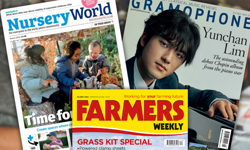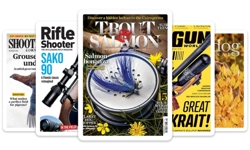
I’m lazy. I like to steal successful copywriting ideas from the masters who have gone before me. More than that though, I like to avoid making basic blunders that ruin my copy. Here are a handful that make me shudder.
Mistake #1: No benefits
Many publishers delude themselves that their titles are, variously, ‘essential’, ‘revolutionary’, ‘unique’ or ‘best’. When, more truthfully, they might be ‘useful’, ‘new’, ‘practical’ or, merely, ‘available’. Instead of resorting to false claims, boasts and hyperbole they should be talking about benefits. I imagine many don’t because they:
a) Don’t know, or have never paused to work out, what the benefits of their titles really are.
b) Find it too time-consuming (or boring) to imagine the world from their subscribers’ point of view.
c) Don’t know what a benefit is AT ALL – and so wouldn’t be able to explain it in writing.
d) Actually believe customers are going to spend their hard-earned cash on something just because it’s described as revolutionary.
Here’s what I suggest. First, spend some time looking at your title as your customer would. And asking the kind of questions your customer would ask. The simplest and most powerful of these is, "What’s in it for me?" Second, start describing how your reader’s life will be more interesting, fulfilling or fun if they subscribe. Third, figure out what your title does that’s good and write copy that dramatises this.
Mistake #2: Unmet objections
If you’ve ever done any face-to-face selling, you’ll know something a lot of marketeers and business owners don’t. You have to find out not just what will make someone buy from you but what’s stopping them from saying ‘yes’. When you’re planning your copy, whether it’s a web page, an email, a brochure or a sales letter, you can’t just focus on benefits. [What? Heresy! – Ed.]You also have to make a list of all the reasons why your reader might NOT believe you. Might not trust you. Might not buy from you. Then you have to figure out the answers to all their "Yes, but…" questions. Here are three of the most common objections and what to do about them…
- Objection 1 – "It’s too expensive"
- Objection 2 – "I need to talk to someone else"
- Objection 3 – "I’m not sure I really need this"
To be honest, price is rarely the real reason why people won’t buy from you. It’s a smoke screen for deeper-seated objections. Here’s what you do. You demonstrate the value of your title to your reader. Show them how much money they’ll save, or make, versus the cost. Talk about their purchase as "an investment". That makes it sound more prestigious and introduces the idea of payback.
Here’s another classic delaying tactic. So you have to show them what they could lose by hanging back. Time is money, right? And give them testimonials from people just like them – an excellent way to provide that missing conversation and reassurance. Old school sales guys would imply that, surely, their prospect was the one to make the decision. "Oh, I didn’t realise your wife made all the important decisions."
If this is what you’re hearing, boy have you got some work to do. It means you haven’t sold your title to your reader. You haven’t convinced them that they will be better off with it than without it. Did you cover every single benefit your title offers? Did you explain with facts just how your reader will benefit? Did you tell a story about life as a subscriber that makes it irresistible? No? OK – well that’s your next challenge. You need to take a long hard look at your copy and more importantly at your publication. Identify what it does for your reader and this objection will melt away.
Mistake #3: Careless repetition
This is a common mistake that you commonly see when the writer is dreaming of walking on the common instead of focusing on their copy.
I reviewed, for a publisher, a two-page sales letter that managed to use the word fantastic six times. An offer, however fantastic (and believe me, this really wasn’t), begins to seem a little desperate when it is described this way half a dozen times.
The two most common causes are laziness and other people changing bits of your copy without reading what’s gone before.
The cure is to read your copy aloud – it pulls you up short on all those repeated words. Plus, be creative. How many ways can you express the concept of half price? Save 50%. Buy one, get one free. You pay for the first one, we’ll pay for the next. Just £50 (normal price £100). Save £50.
Mistake #4: Clunky phrasing
I once wrote a subscriptions promotion for a publisher with a phrase introducing a key benefit like this: "As a subscriber to X, you enjoy…" Present tense. Assumptive close. Short and to the point. The editor changed it to, "If you subscribe to X, you will be certain to be able to enjoy…" Hmm.
Again, reading your copy out loud will reveal this type of writing. The cure is to ask yourself how you would say this to someone face-to-face. The result is almost always a smooth-flowing, clean little sentence that slides straight past their defences unnoticed.
Mistake #5: Speech marks enclosing metaphors
There may, occasionally, be a case for using a well-worn phrase or cliché. But if you ARE going to do this, maybe because it helps you strike the right tone of voice, please don’t enclose it with speech marks. What you are doing is putting your copy "under the spotlight" when it should be "under the radar". Your reader has to "stop in their tracks" to figure out what you mean when your meaning is "crystal clear" without the "offending items". Cure? Delete ‘em all. Every last "man jack" of them.
Mistake #6: Humour
Your sense of humour is a very personal thing. In fact a shared sense of humour can bind two people so tightly together that it will get them through all kinds of scrapes. So if humour is such a powerful human motivator, we should use it on our copywriting, right? Er, no. The trouble with humour in copywriting is twofold. First, it doesn’t travel well. My belly laugh is your wintry smile. Your guffaw is my "ho hum". Our uncontrollable giggling is their "so what". Two, there’s nothing funny about making money – or spending it. In fact it’s one of the most worrying decisions that many people ever make. Particularly if they don’t have much of the stuff to chuck around.
Yet many publishers still resort to humour to sell their titles (or rather, to fill up the expensive media space they’ve just paid for). There are a number of categories of humour that crop up in copywriting – often, though not exclusively, in press advertising. One of my favourites is the lame headline pun. A typical example would be a headline for an ad selling subscriptions to a newsletter on the electricity industry. It goes something like this:
How current is your knowledge of the global electricity industry?
I imagine the poor souls who get bombarded with this sort of stuff every day of the week. "Oh look," they say. "Current. You know, because we’re in the electricity business. How clever!" My tip: think of the most powerful impact your title will have on your prospective subscriber’s life and talk about that in your headline. Dramatise it, be specific, and make it personal.
Mistake #7: Blank outers
Usually, marketeers who don’t, or won’t, overprint envelopes say it’s because, "Then they’ll know it’s direct mail." I’m sorry to disappoint these wide-eyed hopefuls, but your reader already knows it’s direct mail. Unless you’re hand writing every envelope and using postage stamps, there are enough clues to give the game away to even the most simple-minded recipient. Instead, why not try to show them that it’s RELEVANT direct mail. INTERESTING direct mail. Direct mail that could change their lives. You do this with copy. And maybe graphics too. So here are a few thoughts on getting people inside the envelope.
If you are trying to get renewals, use a line of copy that says something like, "Important news about your subscription." For many people, magazines are a welcome part of their week or month, and they will respond well to this sort of line. And other, more creative, approaches.
Use a photo that dramatises the fundamental product benefit. If you publish a snow gear buying guide, an adventure holidays website, or an extreme sports magazine, use a great image of two snowboarders upside down in mid-air.
Do you offer a premium if people become subscribers, or take a free trial? Show that with a line promising details of how to get hold of it inside.
To round off this cornucopia of copywriting calamities, let me leave you with this thought. The greatest error you can make in your copy has nothing to do with grammar, spelling, repetition or leaving blank the acres of real estate in a typical mailpack or web page. No, it’s rather more basic. You have to write for your reader. The moment you forget the customer, your copy could be as error-free as a Mozart violin concerto and they just won’t care.












